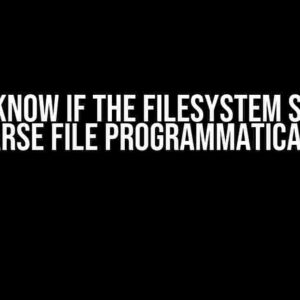When it comes to learning programming, one of the most fundamental concepts is printing output to the screen. Whether it’s a simple “Hello, World!” or a complex algorithm, printing is an essential tool for any aspiring developer. But have you ever stopped to think, “What may I do other than printing a message to display this concept?” In this article, we’ll explore the many ways you can showcase your creativity and skills beyond the humble print statement.
The Power of Output
Visualizing Data
import matplotlib.pyplot as plt
x = [1, 2, 3, 4, 5]
y = [2, 4, 6, 8, 10]
plt.plot(x, y)
plt.xlabel('X Axis')
plt.ylabel('Y Axis')
plt.title('Line Graph')
plt.show()
Interactive Output
import tkinter as tk
class Application(tk.Frame):
def __init__(self, master=None):
super().__init__(master)
self.master = master
self.pack()
self.create_widgets()
def create_widgets(self):
self.hi_there = tk.Button(self)
self.hi_there["text"] = "Hello World\n(click me)"
self.hi_there["command"] = self.say_hi
self.hi_there.pack(side="top")
self.quit = tk.Button(self, text="QUIT", fg="red",
command=self.master.destroy)
self.quit.pack(side="bottom")
def say_hi(self):
print("hi there, everyone!")
root = tk.Tk()
app = Application(master=root)
app.mainloop()
Exploring Alternative Output Methods
sys.stdout.write(): Use thesys.stdout.write()function to write output to the console without adding a newline character.logging: Use theloggingmodule to log output to a file or console, with customizable log levels and formatting.tkinter: Use thetkinterlibrary to create graphical user interfaces with interactive output.pygame: Use thepygamelibrary to create games and interactive simulations with rich audio and visual feedback.
Output Beyond the Console
-
Files: Write output to files for later analysis or processing. This can be especially useful for data-intensive applications or batch processing.
-
Databases: Store output in databases for querying and analysis. This can be especially useful for data-driven applications or business intelligence.
-
Networks: Send output over networks to remote servers or clients. This can be especially useful for distributed systems or real-time applications.
-
Hardware: Use output to control external devices, such as robots, LEDs, or sensors. This can be especially useful for IoT or embedded systems.
| Output Method | Description |
|---|---|
| Console | Display output to the console for immediate feedback. |
| Files | Write output to files for later analysis or processing. |
| Databases | Store output in databases for querying and analysis. |
| Networks | Send output over networks to remote servers or clients. |
| Hardware | Use output to control external devices, such as robots, LEDs, or sensors. |
Challenge Yourself
- Create a program that generates a visually appealing graphic using Matplotlib or Seaborn.
- Develop a simple game using Pygame that responds to user input.
- Write a program that logs output to a file or database using the
loggingmodule. - Use the
tkinterlibrary to create a graphical user interface that displays interactive output.
Conclusion
So, what may you do other than printing a message to display this concept? The answer is simple: anything you can imagine. The power of output is in your hands, and the possibilities are endless.
Frequently Asked Question
When it comes to outputting data, we often find ourselves stuck in a print statement loop. But, there’s more to life than just printing messages! Let’s explore some creative ways to display concepts beyond the realm of printing.
What if I want to visualize my data instead of printing it?
You can use libraries like Matplotlib or Seaborn to create stunning visualizations that help you understand and communicate complex data insights. From bar charts to scatter plots, the possibilities are endless!
Can I use audio to convey my message?
Why not! You can generate audio outputs using libraries like SimpleAudio or PyAudio. Imagine creating a sonic representation of your data or concept – it’s a whole new way to experience information!
How about creating an interactive experience?
Interactive experiences can be incredibly engaging! You can use libraries like Pygame or even create web-based interactions using tools like React or Angular. Just think about it – users can explore and interact with your concept in real-time!
What if I want to create a story around my concept?
You can use natural language processing libraries like NLTK or spaCy to generate text-based outputs that tell a story around your concept. Imagine weaving a narrative that brings your data to life!
Can I use games to teach or demonstrate my concept?
Games can be an amazing way to engage users and convey complex concepts. You can create puzzle-based games, simulations, or even virtual labs to help users understand and interact with your concept in a fun and immersive way!
(Note: You can adjust the tone and language to fit your specific needs and audience.)




